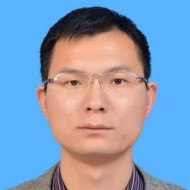Soil Sustainability in the Anthropocene
A special issue of Agronomy (ISSN 2073-4395). This special issue belongs to the section "Soil and Plant Nutrition".
Deadline for manuscript submissions: closed (20 October 2022) | Viewed by 28271
Special Issue Editors
Interests: digital soil mapping; hyperspectral remote sensing images; soil modeling; soil and life
Special Issues, Collections and Topics in MDPI journals
Interests: digital soil mapping; Earth's Critical Zone; soil modeling
Special Issues, Collections and Topics in MDPI journals
Interests: proximal soil sensing; soil and water management; soil dynamics; tillage; traction; compaction; mechanical weeding; soil remediation and management and precision agriculture
Special Issues, Collections and Topics in MDPI journals
Interests: remote sensing; plant physiology; urban climate; soil science; machine learning; digital agriculture; ecology
Special Issues, Collections and Topics in MDPI journals
Special Issue Information
Dear Colleagues,
A new geologic epoch—the Anthropocene—was voted by the 34-member Anthropocene Working Group (AWG) to mark the profound ways in which humans have altered the planet. In the past 200 years of the Anthropocene, human activities have become an important driving force for the important changes to the Earth’s environment. The pedosphere, as the foundation and central junction of the Earth’s Critical Zone, dominates the biogeochemical and hydro-pedological coupling processes and provides necessary ecological functions that sustain terrestrial life. However, unreasonable anthropogenic activities, such as those associated with intensive agricultural management and rapid urbanization, have caused a series of issues to soils, such as soil acidification, salinization, pollution, and erosion. To help to address these challenging issues, many new technologies have been used in soil science, such as digital soil mapping, soil remote sensing inversion, proximal soil sensing, geostatistics, spatial analysis, and machine learning.
Therefore, this Special Issue will collect new developments and methodologies, best practices, and applications in soil science. We welcome submissions that provide the community with the most recent advancements in all aspects of soil and life, including but not limited to the following:
- Data processing, machine learning, and geostatistical and spatial analysis in soil science;
- Spatial and temporal changes in soil organic carbon, nitrogen, phosphorus, heavy metals, salinity, and others in representative areas;
- The global cycle of soil carbon, nitrogen, and water;
- Digital soil mapping;
- The relationships between soil properties and human activities;
- Inversion of soil properties from single and/or multisource sensor-based data (e.g., multispectral, hyperspectral, thermal, LiDAR, SAR, gas, radioactivity sensors);
- Climate modeling of soil systems;
- Soils for sustainable agriculture;
- Emerging approaches to characterize soil carbon and greenhouse gas emissions;
- Soil biodiversity.
Dr. Long Guo
Dr. Xiaodong Song
Prof. Dr. Abdul Mouazen
Dr. Peng Fu
Guest Editors
Manuscript Submission Information
Manuscripts should be submitted online at www.mdpi.com by registering and logging in to this website. Once you are registered, click here to go to the submission form. Manuscripts can be submitted until the deadline. All submissions that pass pre-check are peer-reviewed. Accepted papers will be published continuously in the journal (as soon as accepted) and will be listed together on the special issue website. Research articles, review articles as well as short communications are invited. For planned papers, a title and short abstract (about 100 words) can be sent to the Editorial Office for announcement on this website.
Submitted manuscripts should not have been published previously, nor be under consideration for publication elsewhere (except conference proceedings papers). All manuscripts are thoroughly refereed through a single-blind peer-review process. A guide for authors and other relevant information for submission of manuscripts is available on the Instructions for Authors page. Agronomy is an international peer-reviewed open access monthly journal published by MDPI.
Please visit the Instructions for Authors page before submitting a manuscript. The Article Processing Charge (APC) for publication in this open access journal is 2600 CHF (Swiss Francs). Submitted papers should be well formatted and use good English. Authors may use MDPI's English editing service prior to publication or during author revisions.
Keywords
- soil sustainability
- anthropocene
- critical zone
- soil health
- geostatistics
- remote/proximal sensing
- carbon cycle
- urbanization
- climate change








